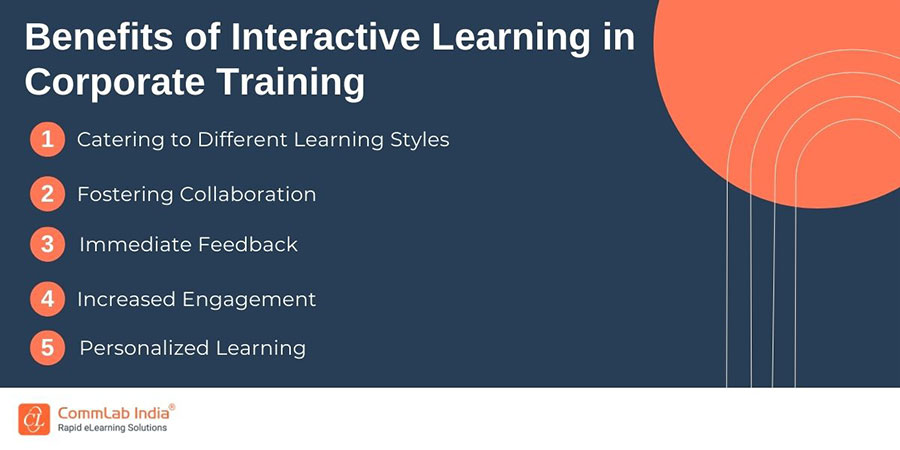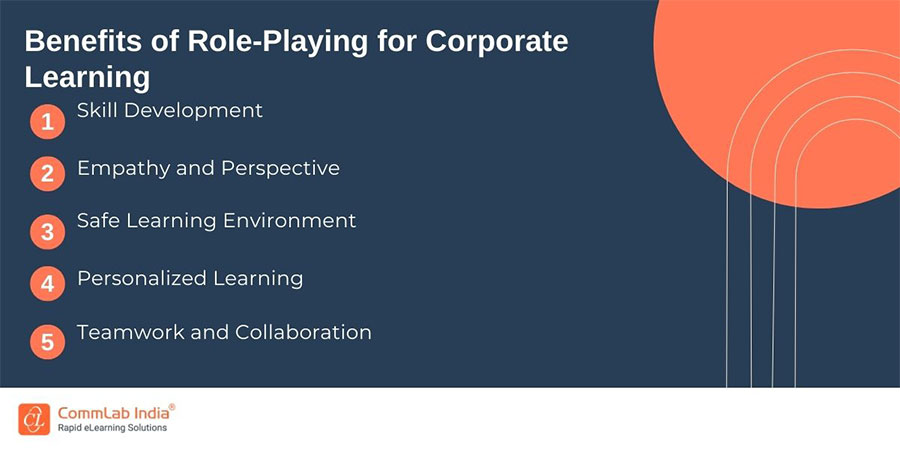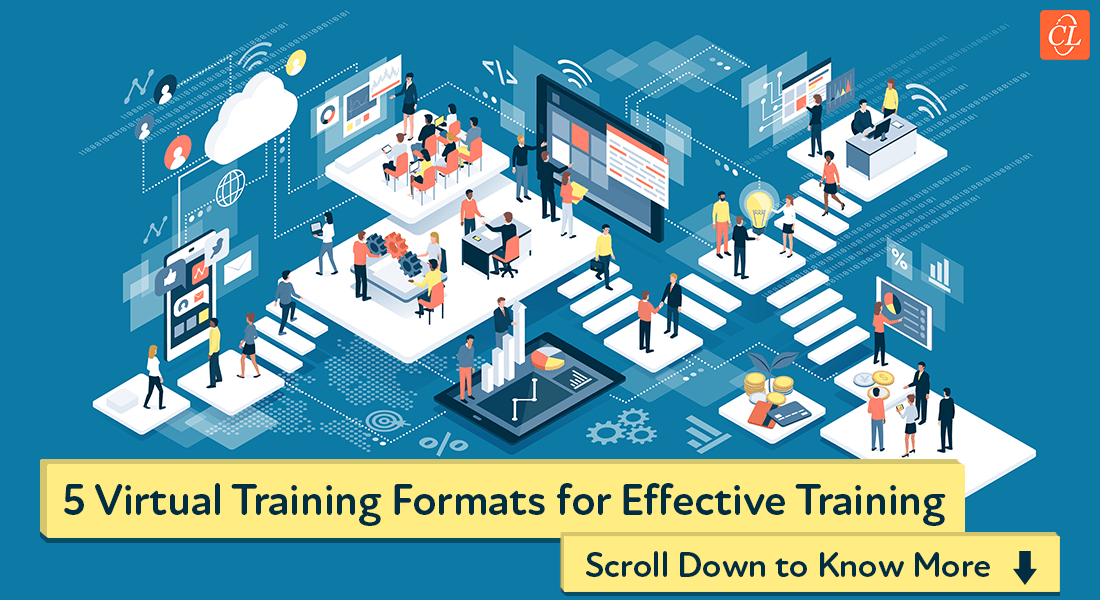7 Interactive Learning Formats to Boost Corporate Training Efficiency
Want to boost your corporate training efficiency? Here are 7 popular interactive learning formats to take your training initiatives to the next level...

Are you tired of the same old boring corporate training sessions? Do you find your employees nodding off or checking their phones during these sessions? Well, it's time to step up your game and make learning fun and engaging!
In this blog post, we will introduce you to seven interactive learning formats that are guaranteed to captivate your audience and enhance their knowledge retention.
Let's dive in!
Why is Interactive Learning Important in Corporate Training?
Interactive learning has gained significant prominence within the corporate training landscape. It is a highly engaging and immersive approach, which can greatly benefit learning and development (L&D) initiatives.
Benefits of Interactive Learning in Corporate Training

Catering to Different Learning Styles: Interactive learning accommodate various learning styles, including those who require hands-on engagement.
Fostering Collaboration: It promotes a collaborative environment where employees can share ideas and enhance communication skills.
Immediate Feedback: Interactive formats provide real-time evaluation, addressing comprehension gaps instantly.
Increased Engagement: Interactive activities are engaging and enjoyable, boosting motivation and interest.
Personalized Learning: Simulations and role-playing exercises tailor training to specific job roles, making it more meaningful and applicable.
In summary, interactive learning offers an effective, engaging, and personalized approach to corporate training, equipping employees to handle workplace challenges and contribute to organizational success.
Let us now discuss the 7 different interactive learning formats that help boost corporate training efficiency -
7 Learning Formats to Boost Corporate Training Efficiency
1. Gamification in Corporate Training
Gamification enhances learning by incorporating game elements into non-game contexts, such as corporate training. It offers several advantages:
1. Increased Engagement: Games are inherently enjoyable, boosting motivation and active participation.
2. Healthy Competition: Leaderboards and rewards foster friendly competition, motivating employees to excel.
3. Personalized Learning: Game mechanics tailor content to individual needs and skill levels, improving the relevance of training.
4. Promoting Problem-Solving Skills: Games encourage critical thinking and strategic skills, valuable in a professional setting.
Gamification transforms training into an engaging and effective learning experience, benefiting both employees and organizations.
2. Simulation
Simulation is a highly effective learning format gaining traction in corporate training. It provides hands-on practice in realistic scenarios, boosting confidence and understanding while allowing for mistakes without consequences. Tailored to specific job roles, simulations engage learners actively and bridge the gap between theory and practical application. They offer an immersive experience that develops problem-solving skills and ensures immediate knowledge application in the workplace.
3. Role-playing
Role-playing, a well-established interactive learning method in corporate training, immerses participants in real-life scenarios. This approach hones essential skills like critical thinking, problem-solving, and effective communication. Role-playing also nurtures empathy, fosters understanding of diverse perspectives, and creates a safe space for learning through mistake-friendly environments. Moreover, it offers personalized learning experiences tailored to specific challenges, promoting teamwork, collaboration, and creativity.

4. Group Activities
Group activities are an essential component of any successful corporate training program. They offer a unique opportunity for individuals to come together and learn from one another while also fostering teamwork, communication, and problem-solving skills. Some group activities for corporate training include team building challenges, and group discussions.
→ Download Now: Discover Instructional Design Strategies for Engaging eLearning Courses [eBook]
5. Case Studies
Case studies are a valuable tool for corporate training programs as they provide real-life examples and scenarios for employees to analyze and learn from. By using case studies, trainers can create interactive learning experiences that engage employees and help them apply their skills and knowledge in practical situations.
6. Virtual Reality/Augmented Reality
Virtual Reality (VR) and Augmented Reality (AR) are increasingly popular in corporate training, offering immersive learning experiences. VR creates virtual environments with interactive headsets, while AR overlays computer-generated data on the real world.
The key benefits of VR/AR in corporate training include:
1. Simulating Complex Scenarios: VR replicates complex or hazardous situations, enabling safe practice for emergency responses or machinery operation.
2. Customized Learning: These technologies provide customizable training, tailoring difficulty levels, feedback, and progress tracking to individual needs for effective learning.
7. Microlearning
Microlearning, a recent trend in corporate training, delivers short, easily digestible content to learners. It breaks complex topics into manageable chunks, improving comprehension and retention.
Key benefits of microlearning include:
1. Flexibility: Learners can engage at their own pace, fitting learning into busy schedules without feeling overwhelmed.
2. Interactivity: Multimedia elements like videos, animations, quizzes, and games engage learners, reinforce concepts, and provide instant feedback.
3. Learning Styles: Microlearning accommodates visual, auditory, and hands-on learners with various formats, ensuring effective knowledge retention.
4. Cost-Effective: Focused, shorter modules save organizations costs compared to traditional training methods.
Microlearning is a versatile and cost-effective approach, enhancing the learning experience for employees.
To Sum Up
In the fast-paced corporate world, effective training is essential for success. We've explored seven interactive learning formats to boost corporate training efficiency. To dive deeper and design engaging eLearning courses, check out our eBook on instructional design strategies.





